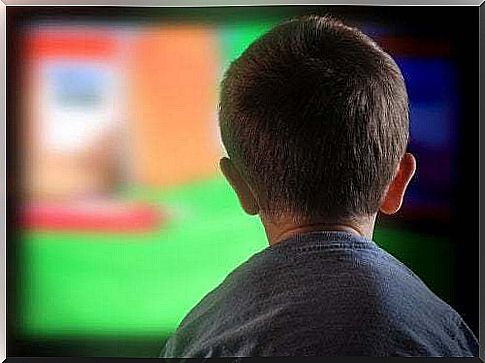Children In Commercials: Right Or Wrong?

Children are increasingly featured in commercials. It is very common to see them, both in advertisements aimed at children and in those aimed at adults. Children in commercials: right or wrong?
We are used to seeing children in advertisements for clothes, toys, food and even drugs. They have become a staple image for the most successful commercials. But what does the law say about it? How is the protection of minors regulated in this regard?
The use of minors in advertising is an activity that can present risks and must be regulated. In this article, we will look at children in commercials: right or wrong?
Why are there children in commercials?
Children are the protagonists of many advertisements. The reason for this commercial choice is that their beautiful smile is more captivating than that of an adult. Children have become very influential in the consumption of many products intended for families. This is especially true because parents today are increasingly attentive to the needs and even the whims of their children.

Some times of the year are particularly favorable for advertising campaigns aimed at children or adolescents and which have themselves as protagonists. The best seasons for launching this type of advertising campaign are, mainly, back to school, the end of the school year and Christmas.
The periods with the greatest advertising impact
In September, when school starts again, parents have to buy notebooks, pencils, pen holders, backpacks and all kinds of school supplies. Most of them want to please their children by buying the things they like best. It is the ideal time for brands to try to persuade children through advertisements where other children choose this or that product.
At the end of the school year, parents tend to please their children by offering them gifts to reward good grades and celebrate the start of the holidays. Then comes Christmas, which is undoubtedly the most favorable time of the year for advertising and consumption. It should be known that children are the main culprits for this consumption. Moreover, they become the protagonists of the advertisements.
But children in commercials are not only featured in advertising the products they consume. They also appear in adult advertisements, often for the purpose of conveying the image of a happy and united family. This is the case, for example, with car ads. In any case, children are today indispensable figures for advertising.
Children in commercials: right or wrong?
The dissemination of information or the use of images or names of minors in commercials can sometimes involve illegitimate interference with their privacy, honor or reputation. In these cases, commercial needs run counter to their interests. If this happens, it is inevitable to resort to precautionary and protective measures and to claim the corresponding compensation.

The relevant regulations place particular emphasis on the effectiveness of the right to privacy and to one’s own image. Thanks to this right, minors are protected even beyond their consent or that of their parents.
In practice, relevant legal actions can be taken in the event that there is an action contrary to the interests of the child in the context of advertisements and advertisements.
The TV and Minors Self-Regulation Code
In Italy, the law allows minors to participate or intervene in an exceptional way in public performances, provided that this does not affect their correct development. Due to the lack of specific legislation on the subject, advertising companies have established a series of rules, brought together in the TV and Minors Self-Regulation Code.
The TV and Minors Self-Regulation Code was born in 1993 in Rome and was signed by the Radio Television Federation which includes 150 local televisions, Mediaset networks and some thematic channels together with 21 associations of users, consumers, teachers and parents.
This Code stems from a double requirement: the first is to have a clear and unambiguous regulation in television programming (including advertising) to protect the child public, binding on all participating broadcasters; the second, to protect the freedom of expression of broadcasters.
However, despite this, there is no clear regulation in this regard. In this sense, there is no general or sectoral norm of the content of work that allows to regulate the working conditions of minors in the world of advertising. Nor are there any corresponding controls.









